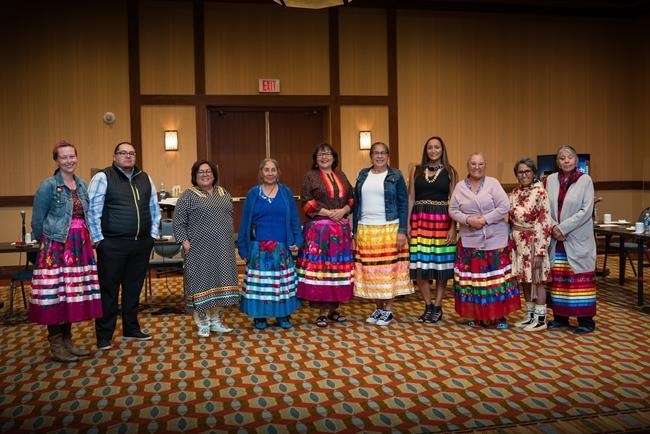EDMONTON — To Terri Suntjens, symbolism means everything.
That's why she decided to get involved with the City of Edmonton's initiative to rename its wards. Suntjens, who is from the Saddle Lake Cree Nation, became a co-chair of the Indigenous Naming Committee.
"Our elders talk to us about how symbolism is so important," says Suntjens, who is also director of Indigenous initiatives at Edmonton's MacEwan University.
"And we can teach from that."
Earlier this month, the city passed a bylaw to give its 12 numbered wards Indigenous names.
A committee of Indigenous women chose the names, which come from nine groups: Cree, Dene, Inuit, Blackfoot, Anishinaabe, Michif (Métis), Mohawk (Michel Band), Sioux and Papaschase.
Edmonton is a gathering place for all nations, Suntjens says, so it was important to consult with elders across the province.
The decision by Alberta's capital to give its wards Indigenous names is an example of a movement in Canada away from names or figures with colonial connections.
In the summer, a group toppled a statue of Sir John A. Macdonald in Montreal after a peaceful march through the city's downtown, one of several demonstrations held across the country by a coalition of Black and Indigenous activists.
Other statues of Canada's first prime minister have been a point of contention, too, as some want them removed because of his troubled history with Indigenous people.
In Halifax, a group including the Assembly of Nova Scotia Mi'kmaq Chiefs recommended a statue dedicated to city founder Edward Cornwallis be permanently removed, and a street and a park honouring him also be renamed.
Commemoration of Cornwallis, a British officer accused of genocide against Indigenous people, is incompatible with current values, the group said in a report in July.
Suntjens says there are schools across the country named after people with problematic colonial histories. Her committee decided early on to stay away from naming Edmonton's wards after people and to honour the land instead.
"We do not think of people as above us or below us," Suntjens says. "We don't put people up on pedestals. That is not our way."
The name for Edmonton's former Ward 2, for example, is Aniriq, meaning breath of life or spirit in Inuktun. It was recommended by Inuit elders to honour their people who died of tuberculosis in Edmonton.
In the 1950s and '60s, about one-third of Inuit were infected with the illness and most were flown south for treatment. Many died without their families being notified and were buried in cemeteries in the city.
Rob Houle, an Indigenous writer and researcher who also served on the renaming committee, says feedback has mostly been positive, but some councillors showed resistance.
"Some might have expected these Indigenous names for the wards to be easier or introductory in nature, but that is not what we were tasked to do."
That kind of reaction prompted Edmonton Coun. Aaron Paquette to tweet: "For those who might be worried about pronouncing the potential new ward names … if we can pronounce Saskatchewan, we can do anything."
In British Columbia, a plan in March to use Indigenous names for some communities along the Sunshine Coast was met with backlash.
Peter Robson, president of the Pender Harbour and Area Residents Association, says there was no warning or consultation with non-Indigenous people in the area.
He says his community of Madeira Park was to be renamed "salalus" as part of an agreement between the B.C. government and the Sechelt Nation in 2018.
"One cannot deny that (Sechelt) Nation people lived here before non-Indigenous people. However, there is also a newer history of the land … that too deserves recognition," read Robson's letter to the provincial government.
A more successful project happened in Alberta in September, when a racist and misogynistic nickname for a landmark on Mount Charles Stewart in the Rocky Mountains was removed. Elders chose to bring back the feature's original name: Anu katha Ipa, or Bald Eagle Peak.
Christina Gray, a B.C.-based lawyer and research fellow with the Yellowhead Institute, a First-Nations-led think tank, commends Edmonton's naming project and says she hopes to see other jurisdictions follow.
"This year in particular, we've seen a tidal shift in perspective, especially around problematic figures throughout Canadian history," Gray says.
"It is also changing in so many different countries that have also experienced colonialism and imperialism."
This report by The Canadian Press was first published Dec. 25, 2020.
Daniela Germano, The Canadian Press




